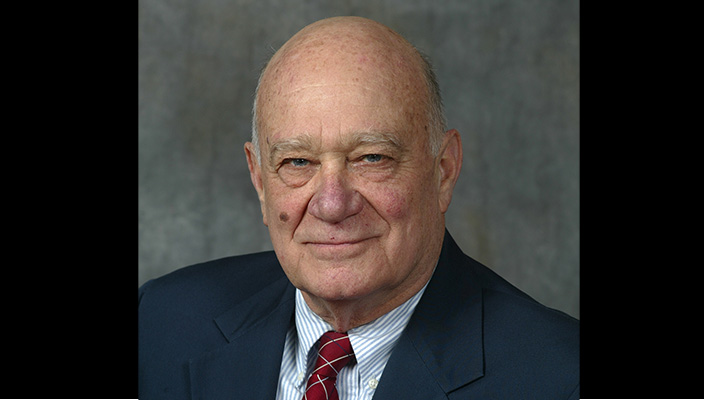[
This week’s presidential election has understandably prompted discussions about the future of federal courts. Amy Coney Barrett’s confirmation to the Supreme Court was achieved very few days before the national vote (and when, for the first time in our history, more Americans have voted before Election Day than on Nov. 3).
To be clear, Donald Trump and the Republican Senate had the legal right to proceed with the nomination and confirmation. But their conduct certainly does not enhance democracy, especially when so many Republicans blocked former President Obama’s nominee in 2016, calling first for the response of voters in a presidential election year.
Led by Hypocrite-in-Chief Donald Trump, they argued that the 2016 presidential election was too near for a judicial confirmation, that the voters’ views should be heeded in November. Trump is recorded as saying the election is “only nine months away.”
In 2020, they used their legal power to speed the confirmation of a person with high credentials who is proud to follow the far-right positions of Justice Antonin Scalia. What if Amy Coney Barrett had said, “I cannot be a nominee at this time because I believe the people should have a say in who gets a lifetime Supreme Court appointment?”
Republicans have been trying to bait former Vice President Joe Biden and Democrats into saying that they will “pack the courts” to get even if they win the presidency and the Senate. Biden has been smart from the start not to challenge the Coney Barrett push as a “constitutional crisis” (as some advised), because the GOP actions were not unconstitutional, although they are filled with hypocrisy. The Lincoln Project (run by Republicans who oppose Trump) together with the Biden campaign should play tapes of what many Republican senators said in 2016 about delaying confirmation processes for nine months before the presidential election.
How much effect would such publicizing have with Trump supporters? Just days ago at a Great Neck Temple Emanuel probing election analysis (via Zoom), Col. Lawrence Wilkerson (Colin Powell’s former chief of staff) expressed astonishment that people continued to support candidate Trump, “who has bragged he could grab women by their private parts” and who has been documented telling more untruths (outright lies!) than any national official in our history.
Now if current polls (much better for Biden than they were for Clinton) result in a President Biden (with a Democratic Senate), there will be actions involving lifetime judges. However, even some liberals have been worried that the notion of “packing the courts” not only could affect election results, but could poison public opinion against President Biden and Democrats.
Their point of reference is FDR when he proposed changing the courts after he won the biggest landslide victory (1936) since George Washington. Ironically, the lifetime justices and judges have drawn so much (undeserved) admiration over decades that media and citizens felt FDR was seeking to unbalance the important separation of powers in our society and our history. FDR’s legitimate considerations of expanding the Supreme Court prompted Justice Owen Roberts’ famous “switch in time that saved ‘Nine’.”
Respect for the Supreme Court has almost always exceeded its contributions to democracy (especially before 1936, with horrible decisions like Dred Scott, Plessy v. Ferguson, Williams v. Mississippi, and many others).
Most Americans are unaware that the Supreme Court has not always been “The Nine” (as few as six and as many as 10) and that lifetime federal judges and districts have been expanded. There are not Constitutional boundaries here, but legislative discretion available for Congress.
As early as the 1830s, the perspicacious French writer and historian, Alexis de Tocqueville, dramatized the irony that the most democratic nation in the world also had an “aristocracy of the robe” — justices and judges who were appointed for life while other national officials had fixed terms and were subject to regular review by voters.
Biden has smartly said that he would appoint a bipartisan commission to make recommendations about court reforms (After so much rank partisanship and vulgar language, it is not surprising that “Trump fatigue” has spurred many voters to turn to someone like Biden, who has shown a capacity for bringing the nation together in policies, values and how we speak with each other).
The proposed Commission on Judicial Reform could do much to minimize the extreme polarization that Trump created, which will be a continuing challenge after he leaves office. There is no shortage of good ideas, and constitutional and legal scholars across the political spectrum have already been designing new approaches that will enhance our democracy.
One of the major ideas is to have an 18-year limit for Supreme Court appointees, so that once a new system is established each president would be able to nominate two justices during his or her four-year term.
There are also revisions regarding the 862 lifetime federal judges (a number often expanded). And while the Biden Commission is at it, there is a need to reform partisan packing of state judicial positions, mostly in Republican-controlled states in recent years.
My next column will elaborate on the creative 18-year Supreme Court term, other reforms, and Congress having the legal, constitutional authority to make such changes.
Is not a democracy better served by officials who must be accountable to the electorate at fixed intervals? Was that not the major principle of the American Revolution, as R.R. Palmer entitled his study: “The People as The Constituent Power?”



